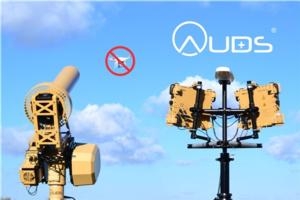AUDS To Be Tested As Part Of The Agency's Pathfinder Program
A fully integrated detect-track-disrupt-defeat Anti-UAV Defense System (AUDS) - developed by a trio of British companies including Blighter Surveillance Systems, Chess Dynamics and Enterprise Control Systems, and integrated/supported in North America by Liteye Systems Inc. - has been selected by the FAA for evaluation at US airports as part of its Pathfinder Program.

This FAA research program is designed to evaluate technologies that can be used to detect and identify unauthorised unmanned aerial vehicles (UAVs) or drone flights near airports. To this end, the FAA has signed a Cooperative Research and Development Agreement (CRDA) with Liteye Systems, the AUDS team's manufacturing and integration partner in North America, to test AUDS at US airports selected by the FAA.
According to the FAA, each month it receives more than 100 reports from pilots and others who spot what appear to be unmanned aircraft flying too close to an airport or manned airplane. It has become a serious safety concern for the agency and a potential security issue for the Department of Homeland Security (DHS).
Mark Radford, speaking for the AUDS team, said, "We are delighted to have been selected for this strategic counter-UAS program through Liteye. The FAA contacted our team following the success of AUDS at US Government sponsored counter UAV trials at the end of 2015. These trials confirmed that our production system was able to detect, track, disrupt and defeat a wide range of micro, mini and larger unmanned aerial vehicles (UAV) or drones - even on unscripted sorties."

The AUDS counter-UAV system can detect a drone six miles away using electronic scanning radar, track it using precision infrared and daylight cameras and specialist video tracking software before disrupting the flight using an inhibitor to block the radio signals that control it. This detect, track, disrupt, defeat process is very quick and typically takes 8-15 secs. The AUDS team has now carried out over 400 hours of 'live' testing in government related trials against more than 400 flown sorties of group 1 UAVs.
"AUDS is able to operate effectively in complex airport environments night and day whatever the weather and without disrupting other airport equipment," added Mark Radford. "Using AUDS, the operator can effectively take control of a drone and force a safe landing inside or outside the airport perimeter.
"The system can also assist airport authorities to track down the UAV pilots for prosecution by providing evidence (video footage or radar tracks) to the relevant authorities. We can also integrate 'friendly assets' into the AUDS platform - for example a 'friendly' drone - to extend the threat detection and situational awareness capabilities of the system and to help capture rogue drone pilots."
The Anti-UAV Defence System (AUDS) integrates the Blighter Surveillance Systems' A400 Series Ku band electronic scanning air security radar, Chess Dynamics' stabilised electro-optic director, infrared and daylight cameras and target tracking software, and a directional radio frequency (RF) inhibitor from Enterprise Control Systems to detect, track, classify, disrupt and defeat UAVs at ranges of up to 10km. The AUDS system is even effective against so-called Group 1 micro UAVs at ranges of up to 2km and Group 1 mini UAVs at ranges of several kms.
The AUDS system is designed for countering drones or remotely piloted aircraft systems (RPAS) in remote border areas, at key infrastructure sites such as airports, airfields, nuclear power stations, oil refineries or for protecting political or sporting events in urban areas. It can be operated from fixed locations and from mobile platforms.
(Image provided with Blighter Systems news release)
 ANN's Daily Aero-Term (04.24.24): Runway Lead-in Light System
ANN's Daily Aero-Term (04.24.24): Runway Lead-in Light System ANN's Daily Aero-Linx (04.24.24)
ANN's Daily Aero-Linx (04.24.24) Aero-FAQ: Dave Juwel's Aviation Marketing Stories -- ITBOA BNITBOB
Aero-FAQ: Dave Juwel's Aviation Marketing Stories -- ITBOA BNITBOB Classic Aero-TV: Best Seat in The House -- 'Inside' The AeroShell Aerobatic Team
Classic Aero-TV: Best Seat in The House -- 'Inside' The AeroShell Aerobatic Team Airborne Affordable Flyers 04.18.24: CarbonCub UL, Fisher, Affordable Flyer Expo
Airborne Affordable Flyers 04.18.24: CarbonCub UL, Fisher, Affordable Flyer Expo




